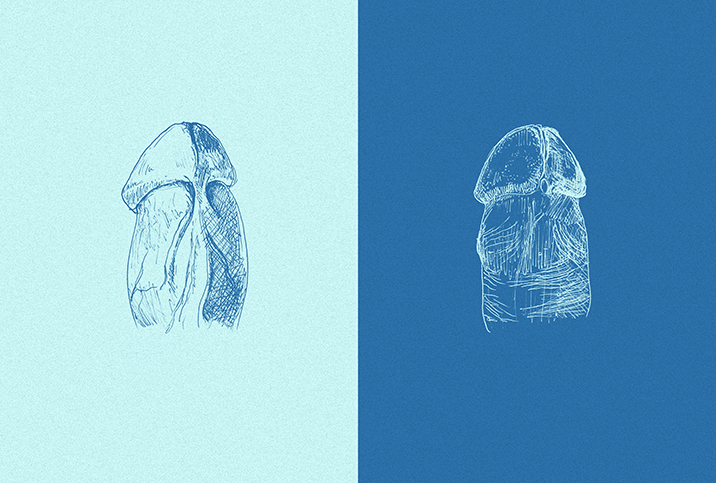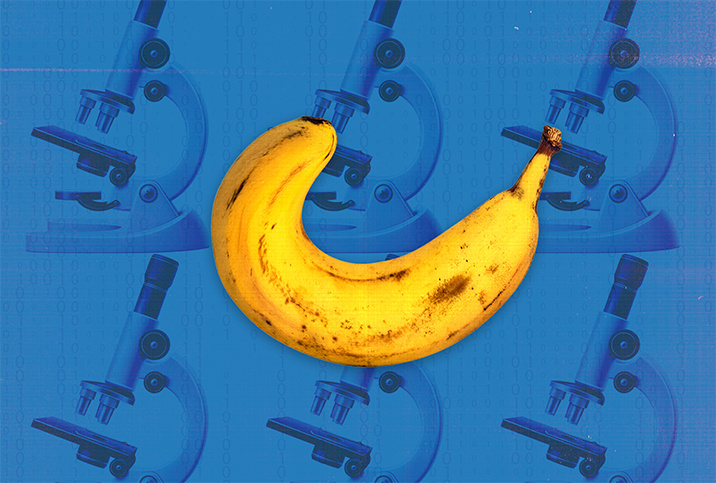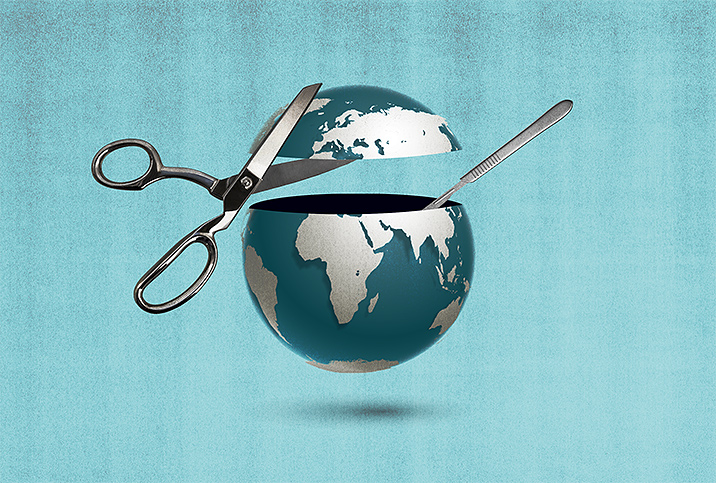Frenuloplasty Provides Relief for People With a Short Frenulum

Some men are born with a short frenulum, or "banjo string," which is a small segment of skin on the underside of the penis that connects the foreskin to the glans, or head, of the penis. It looks like a small V shape just below the head. Yes, that flap of skin has a name. The condition, known as frenulum breve, can affect circumcised and uncircumcised men, and for the latter can lead to difficulty pulling back the foreskin.
"Often, it's nothing bothersome or noticeable, but some guys can have pretty significant issues with it," said Neel Parekh, M.D., a clinical assistant professor of urology at the Cleveland Clinic Foundation.
A short frenulum may make the penis look abnormal cosmetically.
"It can be so tight that it bends the head of the penis down," Parekh said. "It may make it difficult to penetrate for intercourse. It can also cause pain with the erection or pain with intercourse because of how tight that skin is."
Treatment options
Parekh gives patients a couple of treatment options, depending on the severity of their frenulum breve. If it's minor, he may recommend they apply a steroid ointment to the frenulum. The steroid, along with stretching the skin daily over the course of a few weeks, may help loosen the skin enough to where the patient can avoid a surgical procedure.
If the frenulum breve is causing significant pain, a procedure called frenuloplasty surgically alters the frenulum—it's cut and lengthened.
"The procedure is pretty quick and easy," Parekh said. "It can be done under local anesthesia in the office."
If the frenulum breve is causing significant pain, a procedure called frenuloplasty surgically alters the frenulum—it's cut and lengthened.
Parekh recommends having it done under light sedation in an operating room, which is what most of his patients prefer because they'd rather not be awake when they're having their penis operated on.
"The frenulum is very vascular, so there's a lot of blood vessels in the little band of skin," he said. "Once we cut it, we have to make sure that it's very dry or hemostatic and put a couple of absorbable stitches, and those will dissolve on their own after a couple of weeks."
At the end of the frenuloplasty, Parekh typically uses a numbing agent, such as lidocaine, to help with potential pain. Acetaminophen or ibuprofen can also help with minor pain. Parekh recommends that patients abstain from sexual intercourse for about two weeks.
A rare procedure
While frenulum breve is not a rare condition, Parekh said he probably performs fewer than five frenuloplasties each year.
"The question is, how often is [it] actually bothersome?" Parekh said. "A lot of guys will have a slight tilt in the head of the penis, but it's nothing that's bothersome or painful or causes any issues."
Charles R. Powell, M.D., an associate professor of urology at Indiana University School of Medicine in Indianapolis, said frenulum breve is not something doctors learn about in residency, and is not something the IU medical school teaches its residents, either. Of the 26 urologists at the school, Powell said he's not aware of any of them performing a frenuloplasty.
"It's not within the lexicon of urologic disease that we're accustomed to correcting," he said.
Powell is aware of potential problems, however. For example, if the frenulum is too tight, it can be torn during sexual intercourse.
"It can be bloody and extremely distressing," he said. "I have seen that. That would be a good time for frenuloplasty."
Other causes of a frenulum tear may include contact sports, hard physical labor, prolonged cycling, vigorous masturbation, self-grooming gone awry and getting the frenulum caught in a pants zipper.
Circumcision and frenuloplasty
Powell said patients often complain about pain during an erection, but that's typically due to penile curvature conditions, such as Peyronie's disease and chordee.
Someone who has the congenital condition chordee was born with a degree of hypospadias, in which the opening of the urethra is along the underside of the penis instead of the tip.
"The treatment for that is actually much more complex than just cutting the skin, which is what frenuloplasty is," Powell said.
When performing circumcision, a procedure that removes the foreskin of the penis, the doctor typically cuts through the frenulum and sews it back together. With frenuloplasty, though, the surgeon will basically do a partial circumcision, then sew the frenulum back together in a different way so it's a little longer, according to Powell.
Approximately 15 percent to 20 percent of men require additional circumcision following a frenuloplasty, according to estimates in a study published in the Annals of the Royal College of Surgeons of England.
With frenuloplasty, the surgeon will basically do a partial circumcision, then sew the frenulum back together in a different way so it's a little longer.
Parekh said he has not encountered this kind of case, however, and if the frenuloplasty patient is uncircumcised, they don't need to have a circumcision.
"You can just fix that frenulum and that's it," he said.
If you notice pain, bleeding, a bend or an abnormality in your penis, it's important to see a urologist. A frenuloplasty is a 20-minute outpatient procedure that will not affect erections or urination, or lead to any other major side effects, according to Parekh.
"Most guys will have a good result and a short recovery period," he said.




















